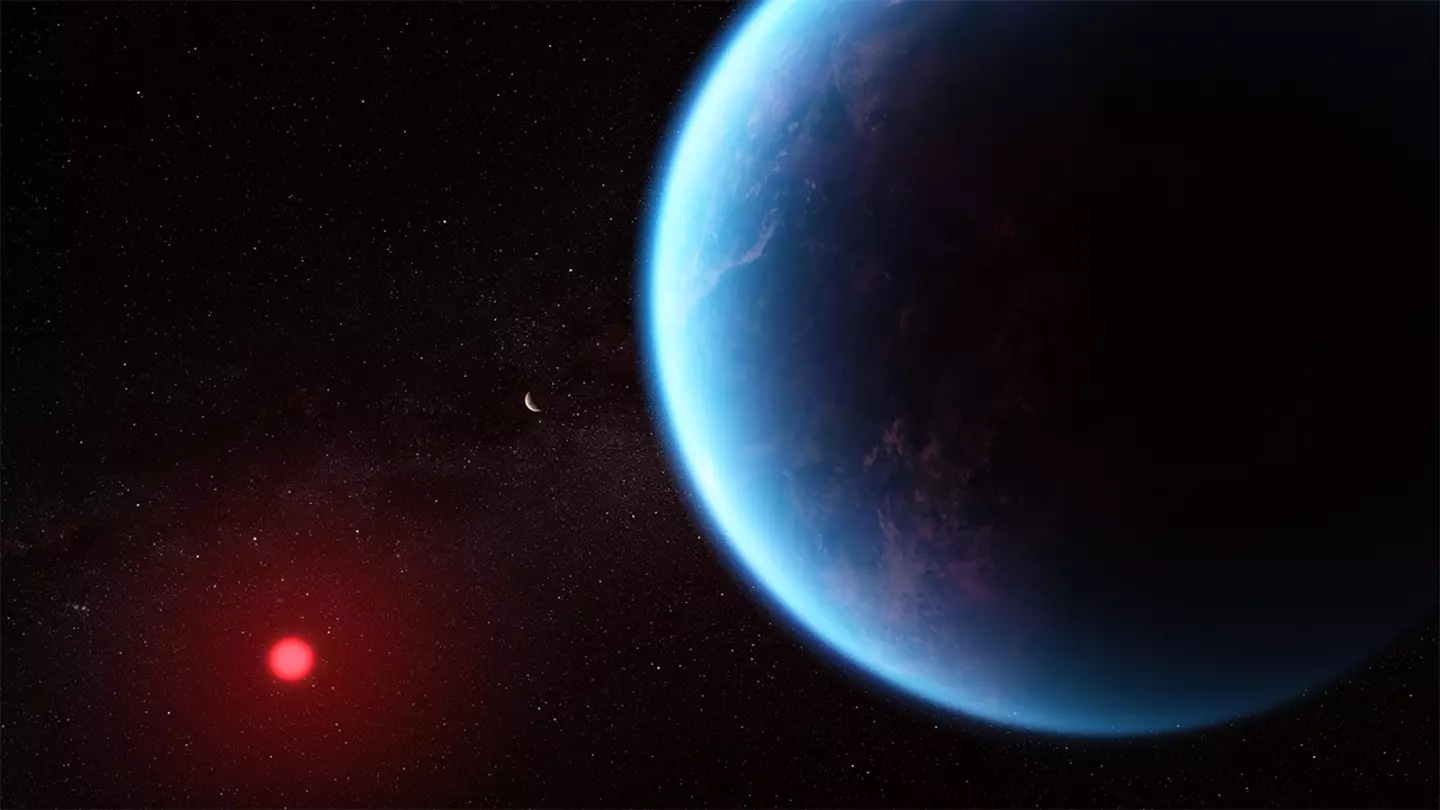NASA Discovers Earth-Like Planet which is like a molecule that is typically created by living organisms on Earth.

Featured Image Credit: Getty Stock Images
NASA Discovers Earth-Like Planet that is 8.6 times larger than Earth and contains a gas that is primarily produced by living organisms.
The James Webb Space Telescope by NASA was sent into space on an Ariane 5 rocket from Europe's Spaceport in French Guiana, South America, on 25 2021. It recently found something very interesting.
The planet
An exoplanet called K2-18 b – also known as EPIC 201912552 b – orbits the red dwarf K2-18 in what NASA says is a ‘habitable zone'.
The distance from Earth is 124 light years, with a radius 2.6 times that of Earth and a mass 8.6 times that of Earth.
NASA's Kepler space telescope found it first in 2009, but the Webb Telescope studied the planet's atmosphere in more detail during its mission.

The exoplanet is known as K12-18 b (NASA, ESA, CSA, Joseph Olmsted (STScI))
The findings
NASA revealed that K2-18b was found to have carbon-bearing molecules like methane and carbon dioxide last year.
The new finding expanded upon earlier research that hinted at the possibility of the planet being a ‘Hycean exoplanet', meaning it could potentially have a hydrogen-rich atmosphere and a surface covered with water oceans.
“These initial Webb observations also provided a possible detection of a molecule called dimethyl sulfide (DMS),” NASA added.
Does this mean that there is life on the planet?

Atmosphere on exoplanet K2-18 b (NASA, ESA, CSA, Ralf Crawford (STScI), Joseph Olmsted (STScI))
Signs of life?
According to NASA, the presence of methane and carbon dioxide, along with the absence of ammonia, suggests that there could be a water ocean beneath a hydrogen-rich atmosphere on K2-18 b.
The first observations made by Webb also detected a molecule known as dimethyl sulfide (DMS). On our planet, this substance is solely created by living organisms. The majority of DMS found in Earth's atmosphere is released by phytoplankton in the ocean.
Nevertheless, NASA points out that the planet's considerable size may suggest that it cannot support life due to the presence of a substantial layer of high-pressure ice in its interior. Alternatively, it is plausible that its ocean is excessively hot to sustain habitable conditions or remain in a liquid state.
 Does the presence of the gases mean there's life on the planet? (Getty Stock Images/ David Wall)
Does the presence of the gases mean there's life on the planet? (Getty Stock Images/ David Wall)
What's next?
Nikku Madhusudhan, an astronomer from the University of Cambridge, emphasized the significance of exploring various habitable environments in the quest for extraterrestrial life.
In the past, scientists mainly looked for signs of life on small rocky planets. However, the bigger Hycean worlds are much better for studying the atmosphere.
The Webb telescope focused entirely on K2-18b on Friday (26 April) to study potential signs of life, observing the planet for eight hours, as per The Times.
Madhusudhan made a decision: “The upcoming Webb observations will verify whether DMS exists in the atmosphere of K2-18 b at notable levels.”
Our main objective is to discover life on a potentially habitable exoplanet, which would revolutionize our knowledge of our position in the universe. Our discoveries are a hopeful advancement towards comprehending Hycean worlds in this pursuit.













